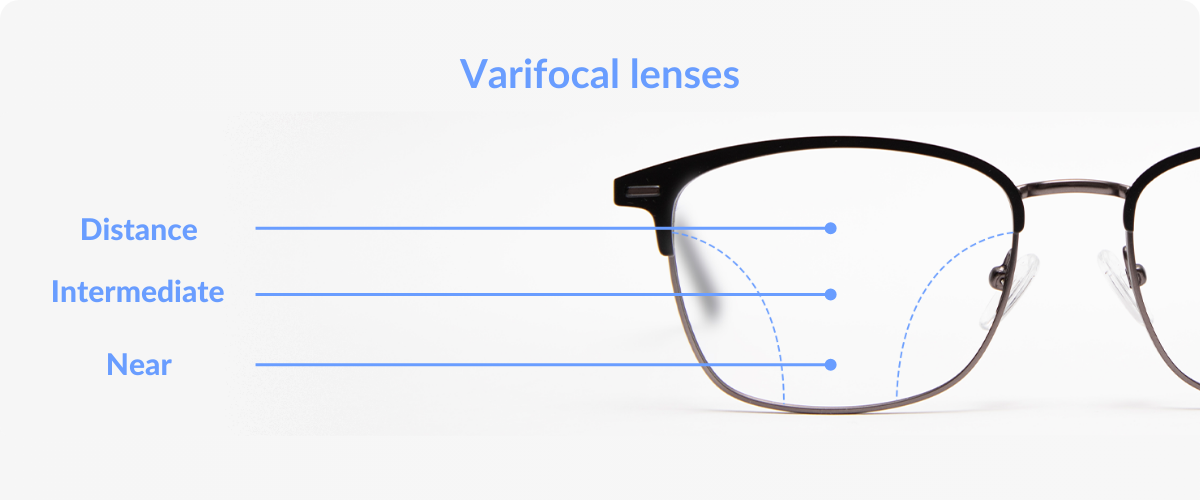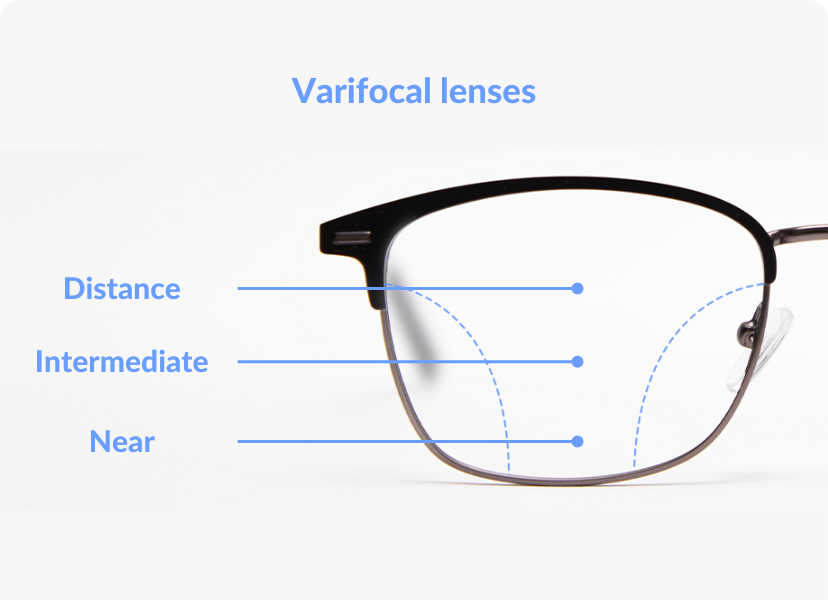Ask our dispensing optician
Your request was successfully submitted!
Varifocal Lenses: Your Solution for Presbyopia

Reviewed by
Beck Jinnette
As we age, our eyes naturally change, leading to a common condition known as presbyopia.
This can make it challenging to focus on objects up close, affecting daily activities like reading or using a smartphone.
For those with a prescription for distance vision, the best solution to correct this eye condition is getting a pair of varifocal lenses and here’s why.
What is presbyopia?
Presbyopia is an age-related universal condition that typically emerges in adults around their 40s.
It’s important to note that it can affect everyone to some degree as they age, even those who have had perfect vision their entire lives.
It’s a natural part of the eye’s ageing process, characterised by a gradual loss of the eye’s ability to focus on nearby objects.
As we age, the lens in our eye, which is normally flexible, becomes stiffer and loses some of its ability to change shape and correct vision.
This change in flexibility causes a gradual shift in focusing ability, which is crucial for clear close-up vision.
Common symptoms of presbyopia include difficulty in reading small print, the need to hold reading materials at arm’s length, eye strain and headaches when engaging in activities that require near vision.
These symptoms often start out mild and gradually worsen over time.


Lenses for presbyopia
There are different lens options to tackle presbyopia.
Reading glasses are a straightforward and widely used option. They are particularly effective for tasks like reading or close-up tasks, providing clear near vision.
However, they need to be removed for distance vision, which can be a nuisance for those who frequently switch between activities.
Bifocal lenses* (and other multifocal lenses) present a more integrated solution.
These are designed with two distinct zones: the lower part for near vision and the upper part for distance vision. They have a clear demarcation between these zones.
While bifocals are practical for those who need both near and distance vision correction, the visible lines on the lenses can be a visual distraction for many users.
Varifocal lenses, on the other hand, offer a seamless experience for those suffering from presbyopia.
They eliminate the visible line found in bifocals, offering a gradient of varying lens powers for near, intermediate and distance vision.


Why varifocal lenses are the best choice
Varifocal lenses work particularly well for addressing presbyopia, offering several distinct advantages:
Tailored for age-related vision changes: Varifocal lenses are specifically designed to address the gradual loss of near-focusing ability associated with presbyopia, providing a seamless visual experience that aligns with the natural progression of the condition.
All-in-one lens: These lenses offer a complete range of vision correction, from near to distance, in just one pair. This is particularly beneficial for presbyopia sufferers who experience various vision issues.
Adaptable to active lifestyles: They are ideal for people with active lifestyles who need a versatile vision solution that adapts to different activities, from reading and computer work to outdoor activities.
Reduced eyestrain and headaches: By providing natural vision at all distances, varifocal lenses can reduce the eyestrain and headaches often associated with presbyopia, especially when switching focus between near and distance vision.
DID YOU KNOW?
Regular eye exams are crucial for those with presbyopia, as the condition progressively worsens with age, requiring adjustments in the strength of the varifocal lens to ensure optimal vision at all times.
What to expect when switching to varifocal lenses
Transitioning to varifocal lenses involves a period of adjustment, but the benefits are substantial.
Initially, you should learn to navigate the different vision zones by slightly adjusting your head position rather than just moving your eyes.
Read all about how to adjust to varifocal lenses for a smooth transition!
For those experiencing symptoms of presbyopia and who want to wear varifocal glasses, it’s required to obtain the correct prescription from a qualified eye doctor.
An eye care professional can provide expert advice on the suitability and adjustment of varifocal lenses tailored to your specific visual needs.
Our in-house opticians can also help you with any doubts or questions you might have.
For example, they can help you choose the right style of frames for varifocal lenses.
Remember, the key to maintaining optimal eye health and the best possible vision is regular check-ups and following professional guidance.
Related articles







































